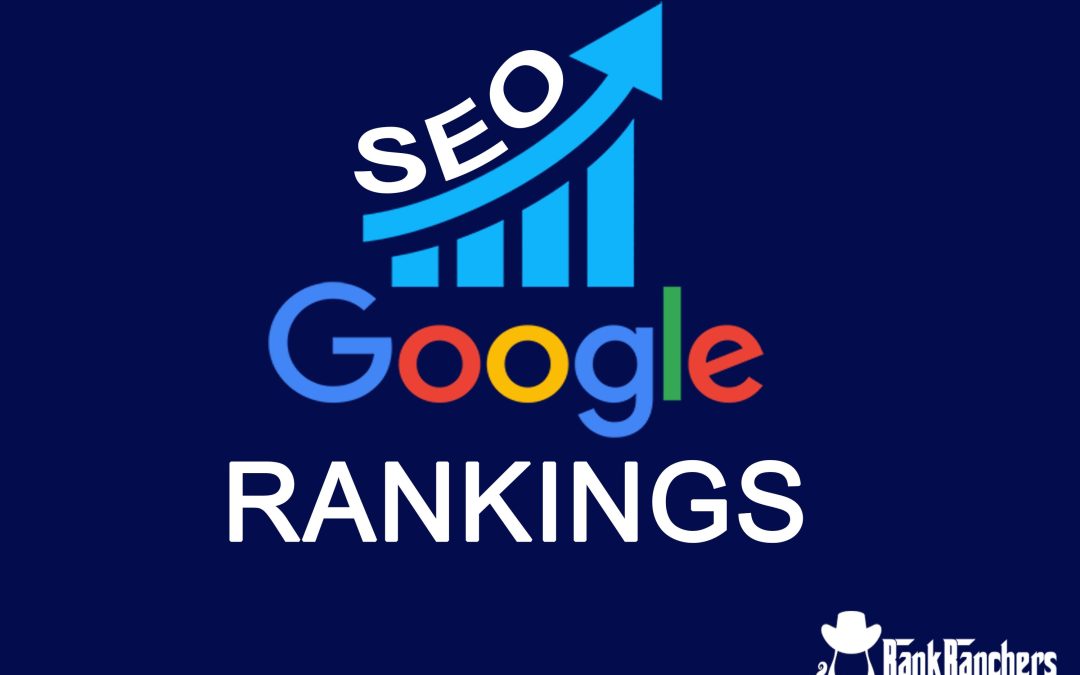Are you tired of your website not showing up high on Google? Don’t worry, you’re not alone. Lots of people struggle with getting their site to show up in search results. So, take a breather, and let’s look at some interesting facts.
Did you know that usually, only one-third of the top results on Google actually get clicked? And a whopping 75% of people don’t go past the first page of results. If your website isn’t on that first page, you’re missing out on a bunch of potential visitors.
But here’s the good news: there are plenty of simple things you can do to make your site show up better in searches. You might know about some of them, but have you actually done them for your website?
In this article, I’ve picked out the 18 Ways to Improve Your SEO Rankings in 2024 to make your site appear more. We will talk about things you can do on your pages, things off your pages, and some technical stuff to help your site show up better in searches. It’s time to boost your website’s chances of being seen online!
Here are 18 Ways to Improve Your SEO Rankings

1. Create SEO-Friendly Content
Boost your online presence by consistently publishing high-quality content that aligns with your industry, products, and services. Frequent updates and relevant content can enhance your search engine rankings for business-related keywords, making it easier for potential customers to discover and connect with your business online.
Quality content informs visitors about your offerings and facilitates the acquisition of valuable backlinks to your website. Utilize tools like Google Search Console to monitor the rankings of your new content and ensure its effectiveness.
2. Enhance Website Speed
Recognize the impact of site speed on search engine optimization. A slow-loading website can lead to high bounce rates, as visitors are less likely to wait for sluggish pages. Additionally, slow-loading sites may experience reduced page crawling by search engines, affecting indexation.
Improving your site’s speed contributes to a better user experience and increases conversions. Research indicates that even a one-second improvement in load time can result in a 7% increase in website conversions. Utilize Google Search Console to identify URLs that require optimization for a faster and more consistent user experience.
3. Optimize Image Elements
Incorporate alt text in your images to convey relevancy signals to search engines. Alt text provides descriptions for images when they cannot be displayed, aiding search crawlers in understanding the content of your pages.
This optimization tactic enhances your site’s visibility in relevant search results. Utilize SEO tools like Screaming Frog or Ahrefs to quickly identify images lacking alt text and address the optimization needs efficiently.
4. Strategically Place Keywords
Increase your chances of ranking higher in search results by strategically placing keywords in essential areas such as URLs, page titles, headings, and content. This practice sends relevancy signals to search engines, improving the likelihood of appearing in search engine results when users query those terms.
However, avoid keyword stuffing to prevent negative impacts on your SEO efforts and potential penalties. Refer to our keyword research guide to select and incorporate keywords effectively.
5. Optimize Site Structure and Navigation
Enhance your SEO by optimizing your site’s structure and navigation. A well-organized and easily navigable site prevents high bounce rates and low dwell times, signaling positive indicators to search engines.
Simple site structures and clean navigation facilitate search crawlers in discovering and indexing pages on your site, a crucial element for achieving higher rankings in search results.
6. Optimize Your Website for Mobile
Given Google’s transition to a mobile-first index, ensuring your website is well-optimized for mobile search is imperative. Utilize SEO tools like Google’s Mobile-Friendly Test to identify any URLs that may not be mobile-friendly.
This shift in indexing signifies that Google evaluates pages primarily from a mobile user’s perspective to provide the most relevant search results. The results are then used for both mobile and desktop searches. Failure to optimize your site for mobile may result in decreased search rankings, even on desktop computers.
Since almost 60% of online searches occur on mobile devices, adopting a responsive design is crucial to maintaining search rankings, attracting new customers, and increasing online revenue.
7. Maintain Regular Website Updates
Achieving a high ranking in search results is not the end of your responsibilities. Similar to regular maintenance for your car and home, your website requires frequent updates to sustain its favorable position in search results and generate leads for your business.
The ever-changing landscape of internet trends and technology requires constant updates to your website to ensure it remains relevant and maintains top-ranking positions.
Staying vigilant about your site’s search engine optimization strategy is a substantial task. If you need assistance keeping your website fresh and up-to-date, explore our SEO plans and connect with us today to consult a strategist.
8. Optimize Meta Information
The backend components, including the title tag, meta description, and meta tags, are crucial in influencing your SEO rankings. These elements provide search engines with essential information, aiding them in understanding the content of your page and appropriately ranking it.
Effectively utilizing meta information enhances the likelihood of your site appearing in relevant search results. For instance, if your page focuses on fishing supplies, incorporating the keyword “fishing supplies” into the meta description, meta tag, and title tag informs search engines about your page’s subject matter. Ensure that all pages feature updated and relevant meta information to revitalize your site’s rankings.
9. Earn Backlinks
The quantity and quality of links leading to your site significantly impact its position in search results. Elevating your rankings necessitates acquiring relevant links from authoritative sites. This positive interaction with Google underscores the importance of earning links from various reputable sources.
Avoid paying for links; this violates Google’s webmaster guidelines and can negatively affect your search rankings. Instead, focus on creating valuable content that prompts other sites to link naturally. Establish connections with industry reporters, bloggers, and influencers, as their endorsement can enhance your link-building efforts and contribute to improved SEO performance.
10. Implement Internal Linking
Internal linking not only guides users from one page to another but also conveys crucial information to search engines regarding the interconnectedness of your pages.
Consider a scenario where you have a page dedicated to various types of wrenches. When you create a blog post mentioning these wrenches for a DIY project, linking to the product page encourages readers to explore further while signaling the content’s relevance to Google.
The choice of anchor text is pivotal in internal linking, as it succinctly describes the link’s destination. Utilize clear and informative anchor text that complements rather than competes with your keywords.
11. Utilize Alt Text
Alt text, displayed in HTML when the original item cannot be rendered, is a vital tool for Google to comprehend image content and page context. Beyond SEO, alt text enhances user experience, ensuring that even if certain elements fail to load, users still grasp the intended message.
For instance, when an image fails to load, the text appears on the screen. Ensure all images incorporate alt text to assist users in case of loading issues and to aid Google in understanding your content.
12. Target Low-Competition Keywords
Strategically focus on keywords with low competition and high search volume to maximize your reach. Tools like Keywords Everywhere provide insights into competition and cost for relevant terms:
Identify related terms that communicate the essence of your site to Google. Targeting low-competition keywords enhances your chances of higher rankings and broader user reach.
13. Optimize for Mobile-Friendliness
Responsive design is paramount for effective mobile marketing, with 37% of users favoring mobile-responsive websites for purchases. A mismatch between your site and the user’s device may prompt them to navigate away. Investing in mobile-responsive design not only retains users but also encourages conversions, signaling to Google the relevance of your site and potentially boosting your position in the SERPs. Google places value on mobile-friendly websites, creating a mutually beneficial outcome.
14. Refine Your Local SEO Strategy
Customize your SEO efforts to local audiences if your business serves specific communities or has multiple locations with unique services. Google prioritizes delivering locally relevant results to users.
Optimize your Google Business Profile by updating it to clearly outline your service area, ensuring customers have comprehensive information about your business, including location, hours, services, products, and contact details. This step is pivotal in aligning your business with local search preferences and enhancing visibility.
15. Optimize Content for Featured Snippets
Featured snippets, prominently displayed at the top of search engine results, particularly for question-based searches, offer a prime opportunity to present concise information:
Strategically optimizing for featured snippets not only facilitates users in finding information swiftly but also encourages clicks on your page. This optimization signals to Google that your site is both informative and relevant, contributing to an improved overall position in the SERPs.
To optimize for featured snippets, consider the following:
- Present questions as H2 headings and promptly provide answers.
- Utilize lists for conveying steps and processes, facilitating easy extraction by Google.
- Maintain conciseness and clarity in your answers.
16. Enhance User Experience (UX)
Search engines prioritize displaying relevant and helpful information, favoring sites that deliver a positive user experience. A holistic user experience approach encompasses usability, functionality, and design.
Ensure that your site boasts an appealing design and functions optimally to provide an excellent user experience. A positive UX translates to increased dwell time, indicating to Google the relevance of your page in search results. Users who spend more time on your site gain a deeper understanding of your business, products, and services.
17. Identify and Rectify Broken Links
Broken links can detrimentally impact your website’s credibility and SEO performance. Broken links may lead to redirect loops, non-existent pages, or issues preventing them from functioning.
To locate and address broken links, utilize Google’s Search Console. Navigate to Crawl > Crawl Errors and select “Not Found.” Identify and replace broken links to uphold the integrity of your site.
18. Address Content Gaps
Content gaps arise when there is insufficient information available for user searches. Identifying and addressing these gaps is crucial, ensuring user queries are met with informative content.
To identify content gaps:
- Analyze competitor keywords.
- Identify missing questions in current search results.
- Evaluate areas where existing content falls short.
By actively filling content gaps, you elevate your content above competitors and respond to user queries more effectively. Regularly review your own site’s pages to address any potential content gaps.
Conclusion
These 18 SEO strategies in your online presence can significantly boost your website’s ranking. Enhance your digital presence by optimizing content, enhancing user experience, and staying attuned to search engine algorithms. Regularly updating relevant content, building quality backlinks, and utilizing effective keywords will help you climb the search results ladder.
Consistency is key—monitor performance, adapt to industry trends, and refine your approach. Remember, SEO is an ongoing process, and your commitment to these practices will ensure sustained visibility and success in the dynamic digital landscape. Keep refining, stay informed, and watch your online presence soar.






